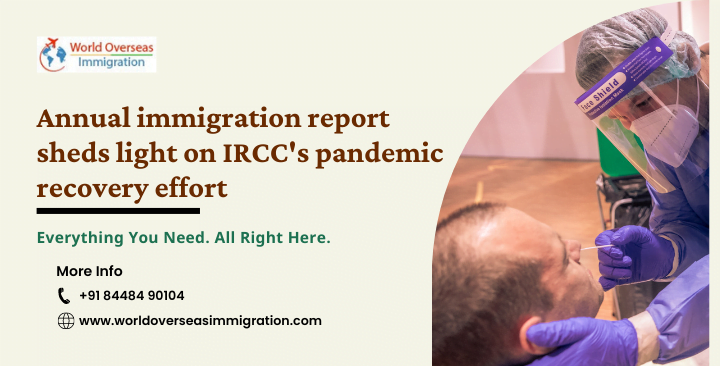[ad_1]
The Government of Canada has released its annual report to Parliament on immigration for 2024.
The report summarizes the value of previous years’ developments in the Canadian immigration sector across all areas of business.
It is issued in conjunction with Canada’s Immigration Level Plan, the official immigration target that will serve as a guideline for Immigration, Refugees and Citizenship Canada (IRCC) over the next three years. The 2021 data shows that the IRCC is making efforts to recover from the effects of the COVID-19 pandemic.
The report goes beyond numbers and provides an insight into how the IRCC has progressed over the past year and how it anticipates that things will continue to grow in the future, particularly now with the number of new permanent residents per year through 2025. with the highest goal.
Here are some highlights of the report.
Record breaking admission in all classes in 2021
The Immigration Level Plan 2024-2024 had a target of over 451,000 new permanent residents by the end of 2024 and about 432,000 for 2024.
These targets were built upon a record-breaking entry into 2021. During 2021, the IRCC focused on granting permanent residency to candidates who already resided in Canada due to restrictions related to the COVID-19 pandemic. This included a number of candidates through the Provincial Enrollment Program (PNP) as well as the Canadian Experience Class until the program was halted in September 2021.
Data shows that 62% of the 405,000 people who became new permanent residents that year, or 252,971 including spouses and dependents of prime applicants, were economic class immigrants.
Canada emphasizes its economic class immigration programs to continue its economic growth due to the current shortage of skilled workers with the high number of job vacancies across the country. Canada’s unemployment rate currently stands at 5.2%. Immigration is responsible for 90% of labor force growth in Canada and about 75% of population growth.
Family class immigration also saw high levels of immigration in 2021 with 81,423 new people being recruited through family class sponsorship. Of these, more than 69,000 reached through spouse or partner sponsorship.
A large part of the overall report highlights Canada’s commitment to a substantial number of refugees and asylum claimants. In 2021, Canada committed to accept 40,000 refugees fleeing Afghanistan by the end of 2024. So far, 22,915 Afghans have arrived in Canada. The majority came from government-aided refugee and privately sponsored refugee programs.
From temporary residence to permanent residence
In 2021, IRCC also introduced a one-time route from temporary to permanent residence. Under this route, 191,338 temporary residents were able to obtain permanent residency.
The program was aimed at international students and those working in essential services such as healthcare. There were also dedicated streams for French-speaking and bilingual temporary residents, with no limits on applications. Through these streams, Canada recruited approximately 24,000 new permanent residents, with an additional 18,000 by the end of March 2024.
Under the international undergraduate stream, IRCC invited 40,000 candidates to apply for permanent residency, allowing them to bypass the traditional route of a post-graduation work permit (PGWP). The window to apply lasted between May and November 2021 and is now closed.
There was a similar stream for healthcare and other essential workers of all skill levels. Temporary residents fulfilling the eligibility criteria can apply for permanent residency. This also applies to skilled refugees.
backlog
In the report, IRCC has acknowledged that there has been a backlog in applications across all sectors of business. It currently has 2.6 million applications on its list, of which 1.1 million, or less than half, are being processed within service standards. A service standard is the goal that the IRCC establishes for processing the average application for a given immigration program.
IRCC says the backlog reached this number due to unprecedented demand due to the COVID-19 pandemic due to international travel restrictions and operational pressures such as being unable to process paper applications during office closures.
To get back on track IRCC says they are working towards becoming 100% digital, arranging accommodation for those unable to apply online. This transition also includes applications for citizenship, which are now 100% online for all applicants over the age of 18. IRCC aims to digitize all citizenship applications, including those for minors below the age of 18, by the end of this year.
The department has invested $85 million in hiring and training more than 1,200 new employees to tackle the processing backlog. The 2024 budget provides $187.3 million to IRCC over the next five years, as well as $37.2 million to invest in the technology and equipment needed to increase capacity within the Customer Support Center and better support the people who use its services. except.
© CIC Updates All Rights Reserved. Visit Worldoverseasimmigration.com to find your Canadian immigration options.
[ad_2]


